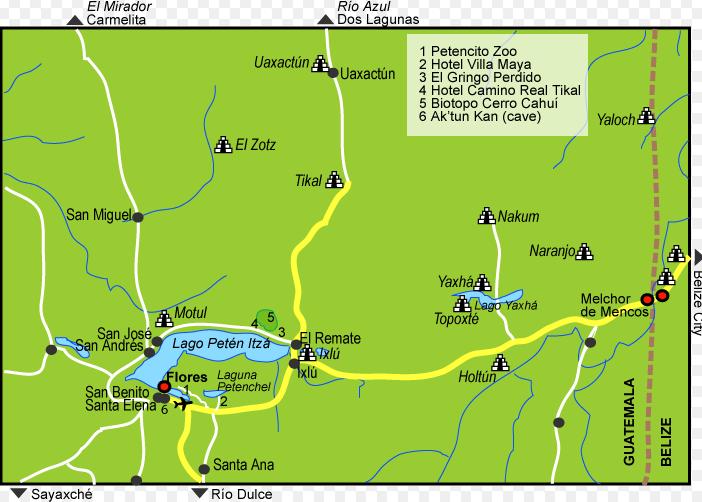The Itza: the Last American Indian State September 23, 2016
Author: Beach Combing | in : Modern , trackback
When did the last American Indian state fall to predatory Europeans? Well, you could argue that there are still some independent hunter-gatherer ‘states’ in the Amazon that have preserved their independence by virtue of jungle foliage. There was resistance among the plain Indians in the US as late as the 1920s (another post, another day). If, though, you focus on the word ‘state’ and look for a convincing Indian polity able to take on the colonists, on something like an equal footing, the answer has to be the Kingdom of Itza in what is today Guatemala.
Details about life in this independent kingdom are difficult to come by. We have the records of a few failed conquistadors and some overly optimistic Franciscans, none who chose to be particularly impressed by the locals’ culture. The realm was apparently, though, ruled by a high-king in partnership with a high priest, both of whom had authority over four loosely ruled sub-kingdoms. The capital was on a series of islands on Lake Péten Itzá: where the high king lived. (There is some controversy about how much control the Itza king really had over his subordinates). Christianity had failed to penetrate and human sacrifices and, rumour claimed, cannibalism were practised. The Itza also had a reputation for ferocity and violence, something that probably gave them another forty or fifty years of freedom from the gospels and the Court of the Indes.
How long did the Itza hold out? Well, Cortés passed through the area in 1525 and so impressed the Itza that they built a statue of his horse. It is a great pity that that particular idol did not survive. Cortés himself almost perished on his rough overland journey and had to be brought back to Mexico by sea. But as the Spanish tightened their grip on Central America the Itza kept slipping through the Spaniards’ fingers. In fact, Péten Itzá, the lake capital, was only conquered in 1697. That is about two hundred years after Columbus; a hundred and fifty years after the creation of Spanish Guatemala; and seventy years after the Mayflower. Pretty impressive by any standards.
How did the Itza manage to keep the Europeans at bay for so long? Remember that these were ferocious Mayans with spears and bows and arrows fighting ferocious Spaniards with muskets, swords and armour: by rights they should have been ground down in the early or mid sixteenth century. The fact that Lake Péten Itzá was buried in wilderness naturally helped. The Itza were also lucky in not having any resources that made the Spaniards salivate: there were no known gold or silver reserves, for example. The key point though was the way that the Itza took care of their borders. As Jones the greatest historian of the Itza writes:
Their principal strategy was to create a wide buffer zone, which they accomplished by punishing those native peoples living along their frontiers who accepted Spaniards in their midst by incorporating such groups into a wider alliance by engaging them as rebels against the colonies. (58-9)
We forget that most American Indian states had no chance to take the Europeans’ measure when they were invaded. In 1510 or 1520 the cyclone fell upon them and there were dead from new diseases and, simultaneously, Europeans armed with fire sticks. Then, before the locals could evolve a strategy, the capital was occupied and Dominicans were singing psalms in the old temples. The Itza were lucky in this respect. They suffered the epidemics, but without a Spanish army at their back. They, then, were able to learn the truly terrifying potential of their Spanish neighbours and find methods for avoiding, deflecting or defeating attacks and missions.
Other longlasting Amerindian states: drbeachcombing At yahoo DOT com
Beach recommends: Jones, The Conquest of the Last Maya Kingdom
25 Sep 2016 Louis points out that actually there is another south American holdout: the Mapuche in South America: another post another day?
12 Feb 2017: Kenton backs up Louis. ‘Another suggestion for the last Indian state : By your definition of a state as a polity able to take on colonists on something like an equal footing, may I suggest the Mapuche people of southern Chile and Argentina? Not only were they never conquered by the Spanish, but they actually forced the Spanish off of the lands the Spanish did manage to take, sacking their cities and forts and forcing the abandonment of Spanish settlement in their territory. For several hundred years they maintained a state of geographical independence (ie with borders recognized by all in the region) and made intermittent low intensity warfare and peace treaties with their Spanish neighbours, although in a curious twist of history, they allied with the Spanish royalists against the Chilean patriots in the Chilean war of independence. They were finally defeated by the Chilean army in the so-called “pacification of the Araucania” between 1861 and 1883. So there you have an indigenous people that managed to fight the colonists on a semiequal footing for 300 years. The wounds of this conflict are still open, and there is still controversy, violence and low intensity terrorism around the theme of ownership of traditional Mapuche lands right up until the present day.


